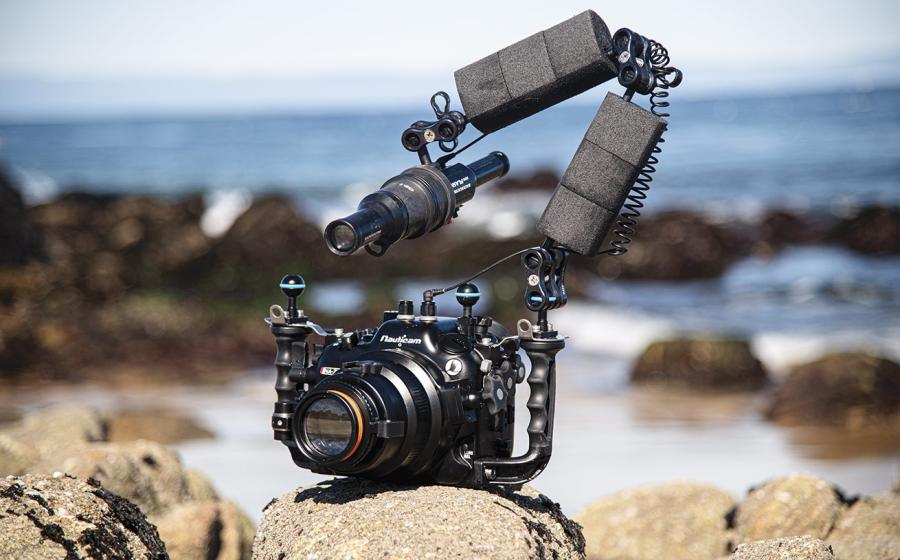Swimming in Harm's Way
March 2000
Setting the Stage
Ed.'s note: The incidents described here are real. Names of locations and people have been changed or deleted.
Eric and Amanda were a couple enjoying their vacation on a resort island, although several days of rain had kept them from diving. When the weather cleared, they decided to charter a private boat just for the two of them. A local dive operator agreed to provide a boat, dive gear, a divemaster/guide and a skipper. They arranged a two-tank dive trip to a nearby island.
The Day of the Dive
The first dive of the day was interesting, but not spectacular. The divers were both novices who had not been in the water for a while, so they fumbled with their gear and skills at first, particularly Amanda. But together with the divemaster they worked out the problems.
Water conditions were still turbid as a result of recent storms, so finding a more interesting dive site was somewhat difficult. But after several tries, the captain found an area of good visibility with more to see. A larger, catamaran-type tour boat was anchored in the best spot at the site to allow its passengers to go snorkeling. The captain of the dive boat had to anchor away from the catamaran, requiring the couple and their guide to swim to the best part of the dive site.
The plan was to descend on the anchor line, swim under water to an area where rocks broke the surface, explore the site and then return to the anchor line under water, using a compass course set by the dive guide. While the three divers were doing this, the snorkelers were reboarding the catamaran, and the catamaran was weighing anchor. The dive went well, and Eric and Amanda had no skill problems.
As the three divers were returning under water to their boat, the catamaran turned and drove between the rocks and the dive boat as it departed the area. The dive guide, who was swimming on his back watching the couple follow him, turned to check his compass course to the anchor line, turned back, and found the couple was gone.
The Accident
As the skipper of the catamaran maneuvered his vessel, he heard a sudden noise from the starboard propeller and took the engines out of gear. In the next moment, the couple surfaced. Eric was yelling, and the water around Amanda was red with blood. Within moments, the dive guide was there helping while the crew of the catamaran brought Amanda on board.
First-aid was quickly rendered to the massive propeller wounds on her leg. The skipper of the dive boat radioed the Coast Guard, which diverted a helicopter to the scene of the accident. Prompt first-aid and evacuation saved Amanda's life and her leg, but the accident left significant damage to her leg.
Analysis
None of the parties to the accident could recount exactly what happened. As is common with traumatic accidents such as this, the victim was unable to remember what happened just before, during or just after the accident. At the time of the accident, neither her buddy nor the divemaster had Amanda in sight.
But there are only two ways Amanda could have gotten to the surface--either she made an ascent into the catamaran's propeller, or she lost buoyancy control and floated into the prop. It took mistakes by both the victim and the crew of the catamaran to cause this accident. The dive operation did nothing to cause the accident and had no way to prevent it.
Lessons for Life
-
Stay aware of your buoyancy at all times and keep it under control. If you become too buoyant and start an out-of-control ascent, dump all the air from your BC by the quickest possible method, while exhaling, to stop the ascent. Then sort things out.
-
Plan all ascents. Pause before starting any ascent to make sure all is well. Pause again at 10 to 20 feet as a safety stop and to check the surface. Listen and look all around before surfacing. Finally, look up, reach up and ascend slowly. If at all possible, use anchor lines, the slope of the bottom, the edge of kelp beds, or pier and float structures as guides during your ascent.
March 2000
Setting the Stage
Ed.'s note: The incidents described here are real. Names of locations and people have been changed or deleted.
Eric and Amanda were a couple enjoying their vacation on a resort island, although several days of rain had kept them from diving. When the weather cleared, they decided to charter a private boat just for the two of them. A local dive operator agreed to provide a boat, dive gear, a divemaster/guide and a skipper. They arranged a two-tank dive trip to a nearby island.
The Day of the Dive
The first dive of the day was interesting, but not spectacular. The divers were both novices who had not been in the water for a while, so they fumbled with their gear and skills at first, particularly Amanda. But together with the divemaster they worked out the problems.
Water conditions were still turbid as a result of recent storms, so finding a more interesting dive site was somewhat difficult. But after several tries, the captain found an area of good visibility with more to see. A larger, catamaran-type tour boat was anchored in the best spot at the site to allow its passengers to go snorkeling. The captain of the dive boat had to anchor away from the catamaran, requiring the couple and their guide to swim to the best part of the dive site.
The plan was to descend on the anchor line, swim under water to an area where rocks broke the surface, explore the site and then return to the anchor line under water, using a compass course set by the dive guide. While the three divers were doing this, the snorkelers were reboarding the catamaran, and the catamaran was weighing anchor. The dive went well, and Eric and Amanda had no skill problems.
As the three divers were returning under water to their boat, the catamaran turned and drove between the rocks and the dive boat as it departed the area. The dive guide, who was swimming on his back watching the couple follow him, turned to check his compass course to the anchor line, turned back, and found the couple was gone.
The Accident
As the skipper of the catamaran maneuvered his vessel, he heard a sudden noise from the starboard propeller and took the engines out of gear. In the next moment, the couple surfaced. Eric was yelling, and the water around Amanda was red with blood. Within moments, the dive guide was there helping while the crew of the catamaran brought Amanda on board.
First-aid was quickly rendered to the massive propeller wounds on her leg. The skipper of the dive boat radioed the Coast Guard, which diverted a helicopter to the scene of the accident. Prompt first-aid and evacuation saved Amanda's life and her leg, but the accident left significant damage to her leg.
Analysis
None of the parties to the accident could recount exactly what happened. As is common with traumatic accidents such as this, the victim was unable to remember what happened just before, during or just after the accident. At the time of the accident, neither her buddy nor the divemaster had Amanda in sight.
But there are only two ways Amanda could have gotten to the surface--either she made an ascent into the catamaran's propeller, or she lost buoyancy control and floated into the prop. It took mistakes by both the victim and the crew of the catamaran to cause this accident. The dive operation did nothing to cause the accident and had no way to prevent it.
Lessons for Life
Stay aware of your buoyancy at all times and keep it under control. If you become too buoyant and start an out-of-control ascent, dump all the air from your BC by the quickest possible method, while exhaling, to stop the ascent. Then sort things out.
Plan all ascents. Pause before starting any ascent to make sure all is well. Pause again at 10 to 20 feet as a safety stop and to check the surface. Listen and look all around before surfacing. Finally, look up, reach up and ascend slowly. If at all possible, use anchor lines, the slope of the bottom, the edge of kelp beds, or pier and float structures as guides during your ascent.










